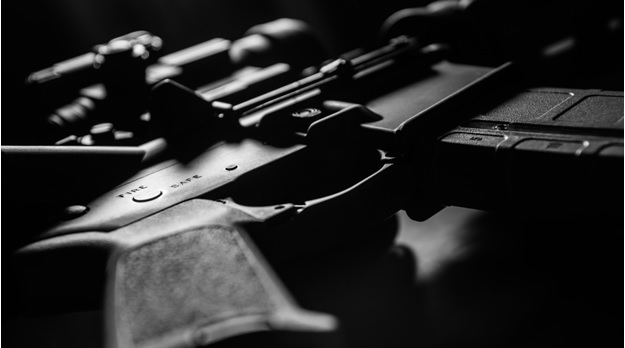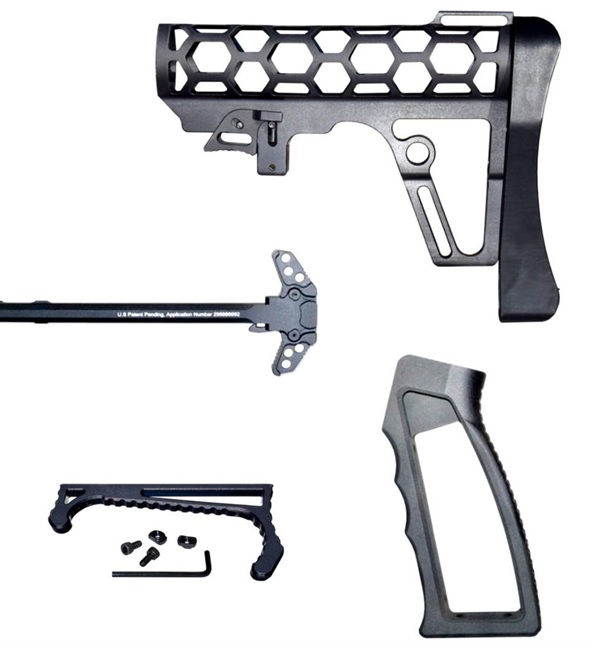You know why we call the AR-15 “America’s Rifle?”
Because it’s popular.
You know why it’s popular?
Well, that one’s a bit tough to answer. Everyone has their own reasons for loving it, but definitely, one of the top reasons is the platform’s modularity.
There’s not a lot you can’t do with an AR. You can swap the BCG, the barrel, the muzzle device, or add a new handguard, stock, or skeletonized pistol grip fairly painlessly, and there are more compatible parts out there for AR-15 rifles and AR-style platforms than you can shake the proverbial stick at.
Some of these are skeletonized AR 15 parts.
At first glance, it might seem like having a skeletonized AR 15, or using skeletonized parts, is sort of like a gimmick - like a colored gun skin.
And there is a spot of truth to this. Some shooters skeletonize their rifles just because it looks cool.
But for the rest of you thinking about it, who need a little more reason, here are some logical arguments in favor of a skeletonized AR 15.
Shedding As Much Weight As Possible: Taking It to an Art Form
Besides the cool factor, the basic precept of skeletonization in gear, not just in guns, and certainly not just in AR platforms, is weight savings.
The more fully you can skeletonize your chassis or shooting attachments, the more effectively you can shed every possible ounce from the platform.
Your average stock AR-15 weighs more than 7 pounds, and that’s before you add lights, optics, and a loaded 30 round mag, which, by the way, can weigh a pound on its own.
So, by the time your done with it, your rifle might weigh north of 10 pounds. That’s not nothing, especially if you hunt or compete.
Carrying an extra 10 pounds all day long, or through a competition, is a morale sapper and an energy drainer.
Wherever, whatever you can skeletonize will shave much-needed ounces off the overall platform.
Easier, Less Fatiguing to Carry
If you can shed a few ounces (or pounds) off your AR rig, the better for you. They’re easier and less fatiguing to carry for prolonged periods of time.
This makes a difference no matter how you carry your weapon, whether on your back, in front of you, or shouldered - either way, lighter is less tiring.
Faster and Lighter
Lightening the overall chassis of the rifle and shedding ounces from parts like the stock, handguard, and attachments also has an impact on how the rifle handles.
Lighter, skeletonized AR 15 platforms are easier to carry shouldered, and are quicker and more responsive.
This makes it potentially easier for you to quickly acquire a target, as well as to fire a rapid succession of shots on different targets.
No Significant Loss of Strength
The whole point of skeletonizing the platform is to lighten the rifle without adversely affecting the integrity of its structure.
So, with respect to strength and durability, there’s not a big difference between skeletonized and solid aluminum components and AR-15 parts.

Add More Without Feeling It
If you consider customization to be a zero-sum game, think of it like this. Every ounce you shed as a result of skeletonizing your AR is an ounce you can add somewhere else.
That is, if you lighten the handguard, you can add a heavier barrel, which will be more stable and put up with thermal stresses better.
If you shed some ounces from the stock, you can counteract it by adding a heavier buffer weight.
If you shed some weight skeletonizing the grip or forend, you have a few spare ounces you can drop into attachments on the handguard.
And it ultimately balances out.
It’s Easier to Adjust the Rifle’s Balance
Another great thing about skeletonizing your AR is that you can tinker with the balance point.
Rifles that are heavier at the front tend to make better long-range shooters since they are more stable, even though they might be a little more cumbersome or awkward to carry. Skeletonizing the stock and grip might make sense here.
On the flipside, lightening the overall platform, or shedding ounces at the front, around the forend and handguard, will result in a rifle with a balance point farther back. A rifle configured in this fashion will be lighter and quicker to point.
It’s Not All Sunshine and Rainbows, Though: Arguments Against Skeletonized AR 15 Rifles
While there are definitely some advantages to skeletonized AR 15 rifles that deserve to be covered, it’s not all good news.
Let’s remember that the AR-15, which gave rise to the M16, was designed as a battle rifle. Skeletonized parts are little more than an entryway for dirt and grit to work their way into the platform.
The more surface area the rifle has - which compounds itself with each skeletonized part - the more space there is that you need to keep clean, and the easier it is for the rifle to get gummed up with oil or dirt or anything else like that.
So, even though skeletonized parts are lighter and potentially just as strong as alternatives, they are a lot harder to clean, and it takes longer to do so as well.
Therefore, while it might make sense to skeletonize your rifle (or partially skeletonize it) to lighten it for competition, if you’re going to carry this platform out in the mud, rain, and snow, you might want to think twice.
Skeletonized AR 15 Parts and Accessories

Looking for high-quality skeletonized AR 15 parts and accessories made from lightweight, strong, corrosion-resistant anodized 7075 aluminum?
We carry them. Check out the previous link to learn more. Upgrading your rifle is easy, affordable, and won’t take long, and at the end of it, you’ll be able to reap some of the benefits mentioned here.
Take a look through our collection, then check out our other AR-15 parts and accessories and get in touch with us at Sales@MCSGearup.com or at 239-848-6757 if you have any other questions.

